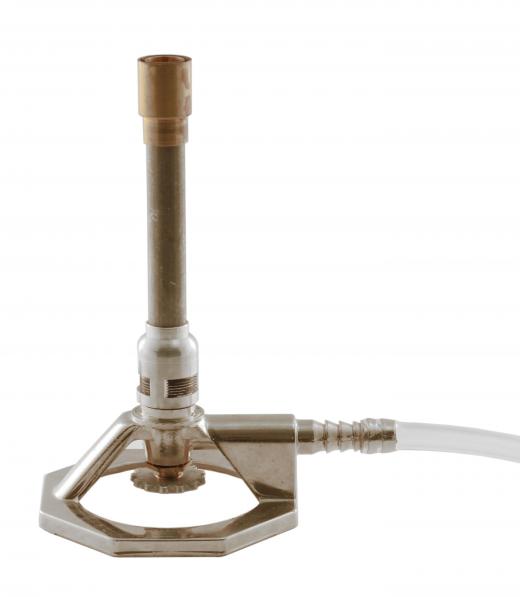What is the Temperature of Flame?
 Michael Anissimov
Michael Anissimov
The temperature of flame varies depending on the substance being burned and the extent to which the fuel and oxidizer have been pre-mixed. One of the lowest is the "safety flame" of a Bunsen burner, to demonstrate it is on — about 572°F (300°C), while the hottest is carbon subnitride burning in pure oxygen, with a temperature of 9,008°F (4,987°C), almost as hot as the surface of the sun. The nuclear "flame" that heats the sun is not a chemical flame at all, but it does have an extremely high temperature — at the sun's core, it is estimated at over 23,400,000°F (13,000,000°C).
When the fuel and oxidizer are mixed well, the temperature of flame is higher, as the reaction proceeds more quickly and generates more heat. When the fuel and oxidizer are not mixed at all prior to combustion, the reaction occurs imperfectly, generating less total heat. This is typical in the case of burning wood, where hot gases carry away unburned wood particles.

The temperature of a blow torch is about 2,372°F (1,300°C), a candle is 2,552°F (1,400°C), and an oxyacetylene torch is 5,432°F (3,000°C). The temperature burning cyanogen is second only to carbon subnitride, at over 8,180°F (4,525°C). In cyanogen and carbon subnitride, the high temperature is derived from the large number of available carbon atoms — two in the former, four in the latter. As these carbon atoms combine with oxygen during the process of combustion, they release excess energy in the form of heat.

The color of a flame is often related to its temperature, although the molecule being burned is relevant as well. Light resulting just from temperature is called blackbody radiation, and ranges from red at 1,000 K (about 1,340°F or 727°C) to orange/yellow at 3,000 K (about 4,940°F or 2,727°C) to white or light blue at temperatures above 5,000 K (about 8,540°F or 4,727°C.
AS FEATURED ON:
AS FEATURED ON:














Discussion Comments
Relative to this, I need to know what I can burn in a glass jar? My husband is a firefighter, we are having our wedding at the end of this month, and our "unity event" is going to be putting out a small fire together.
The sun uses nuclear fusion to produce its energy and light. Nuclear fusion is the most exothermic reaction possible.
nice information.
Post your comments